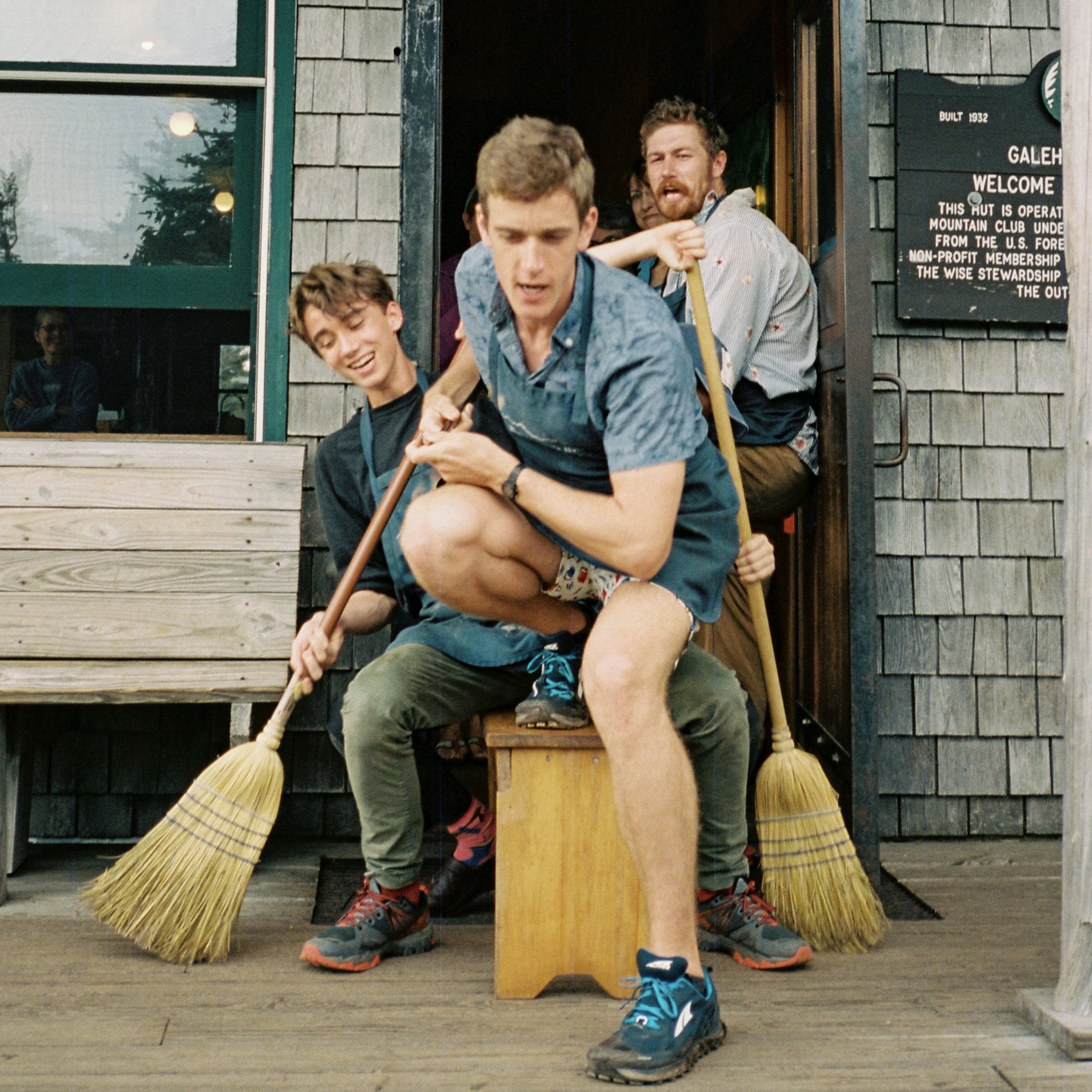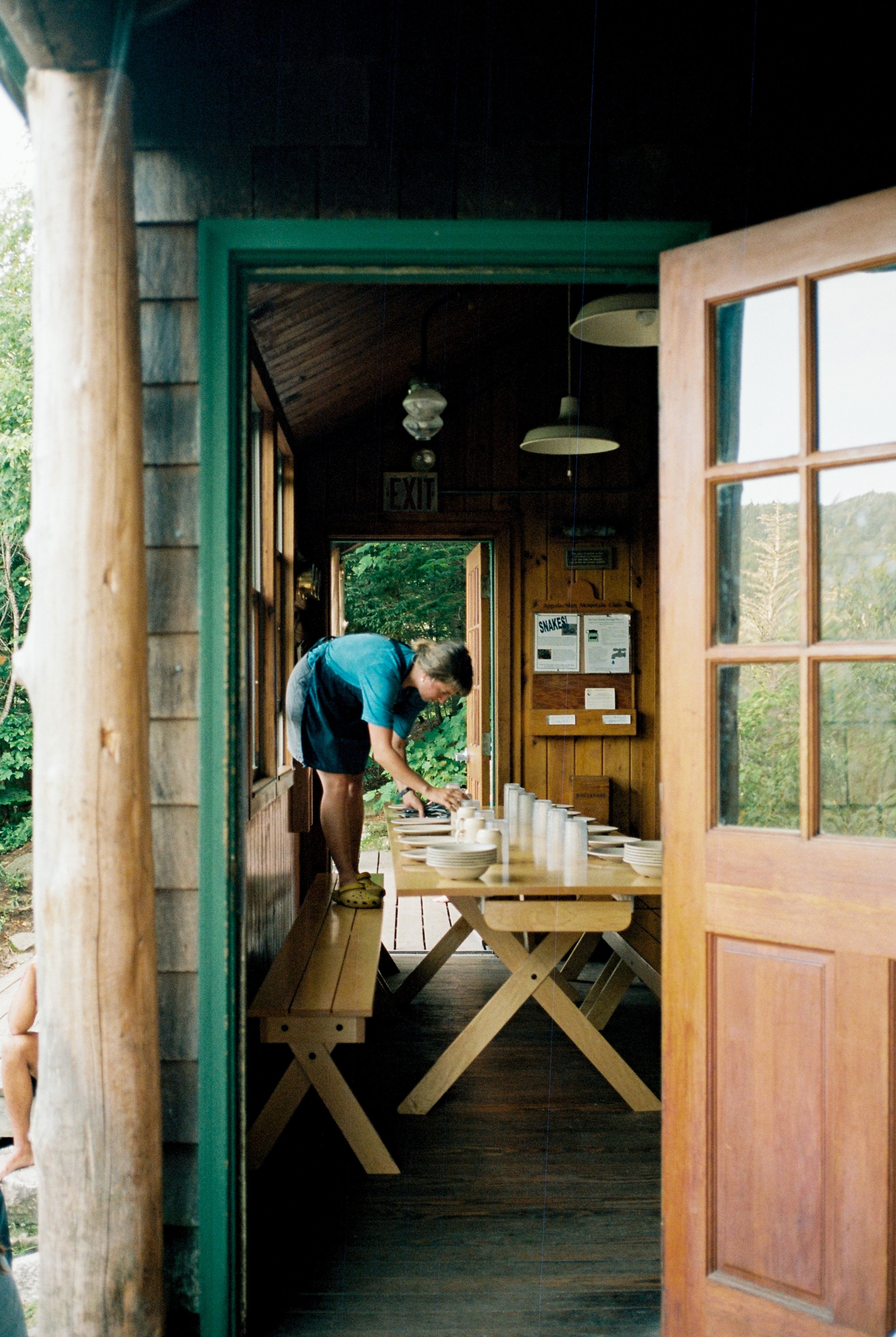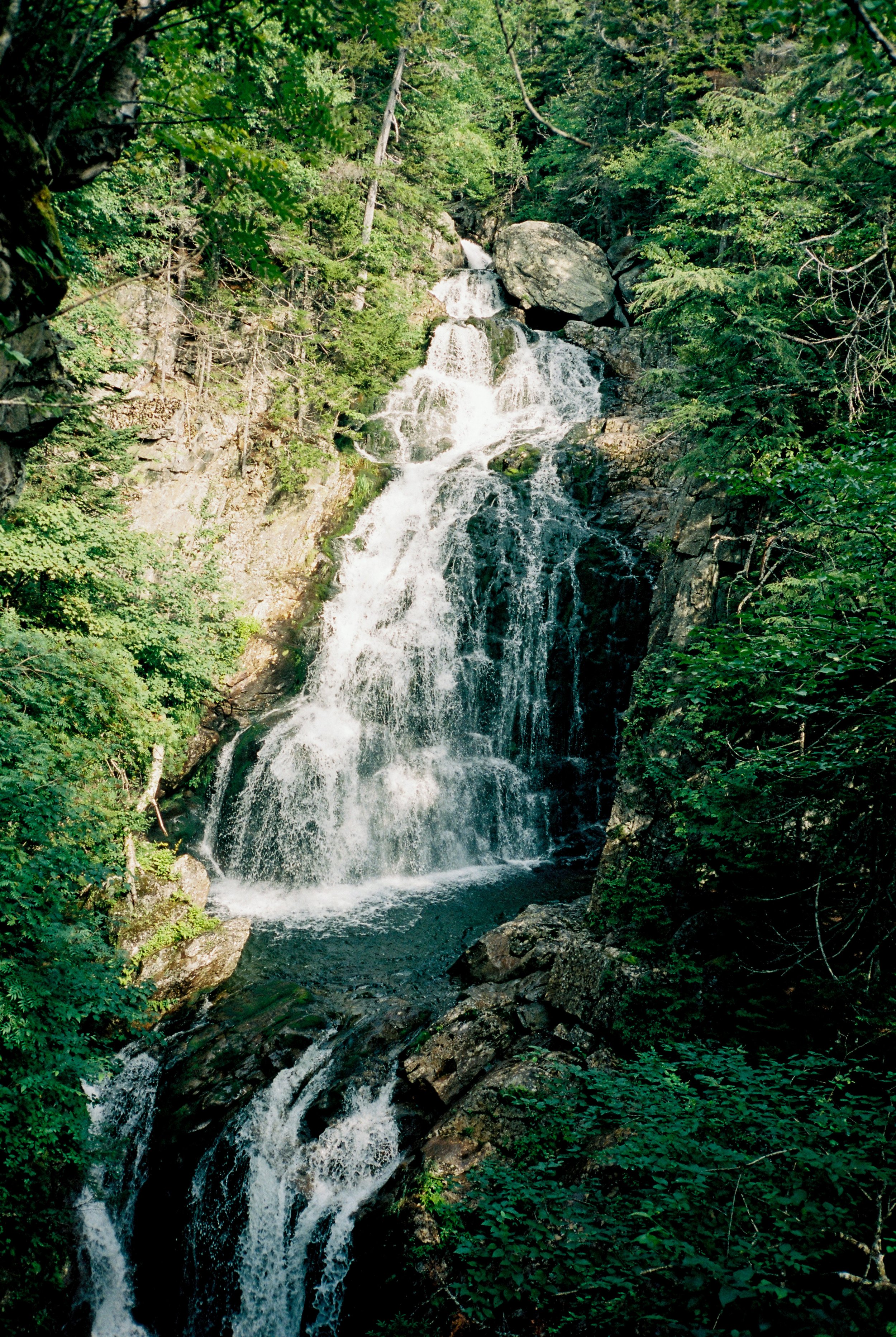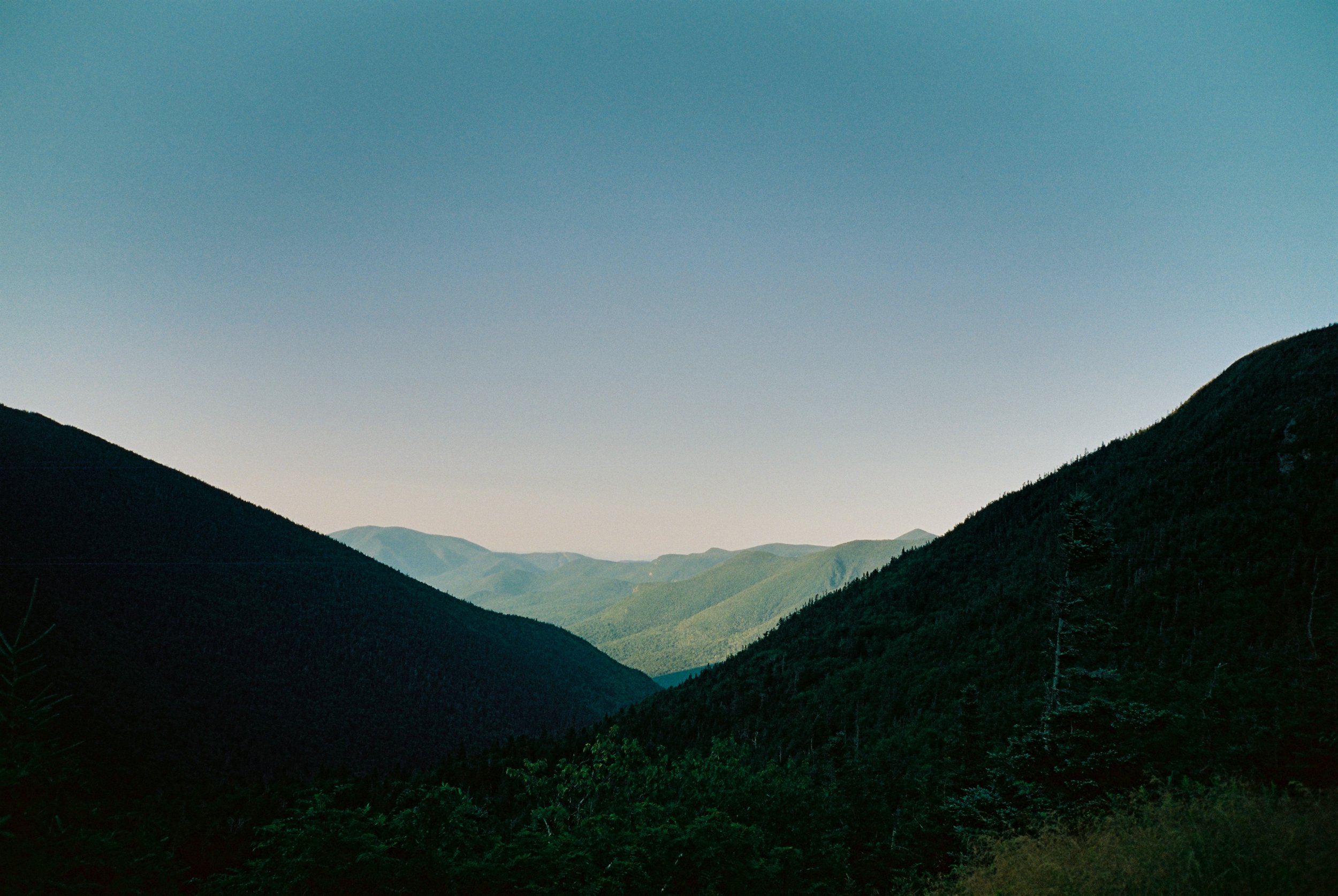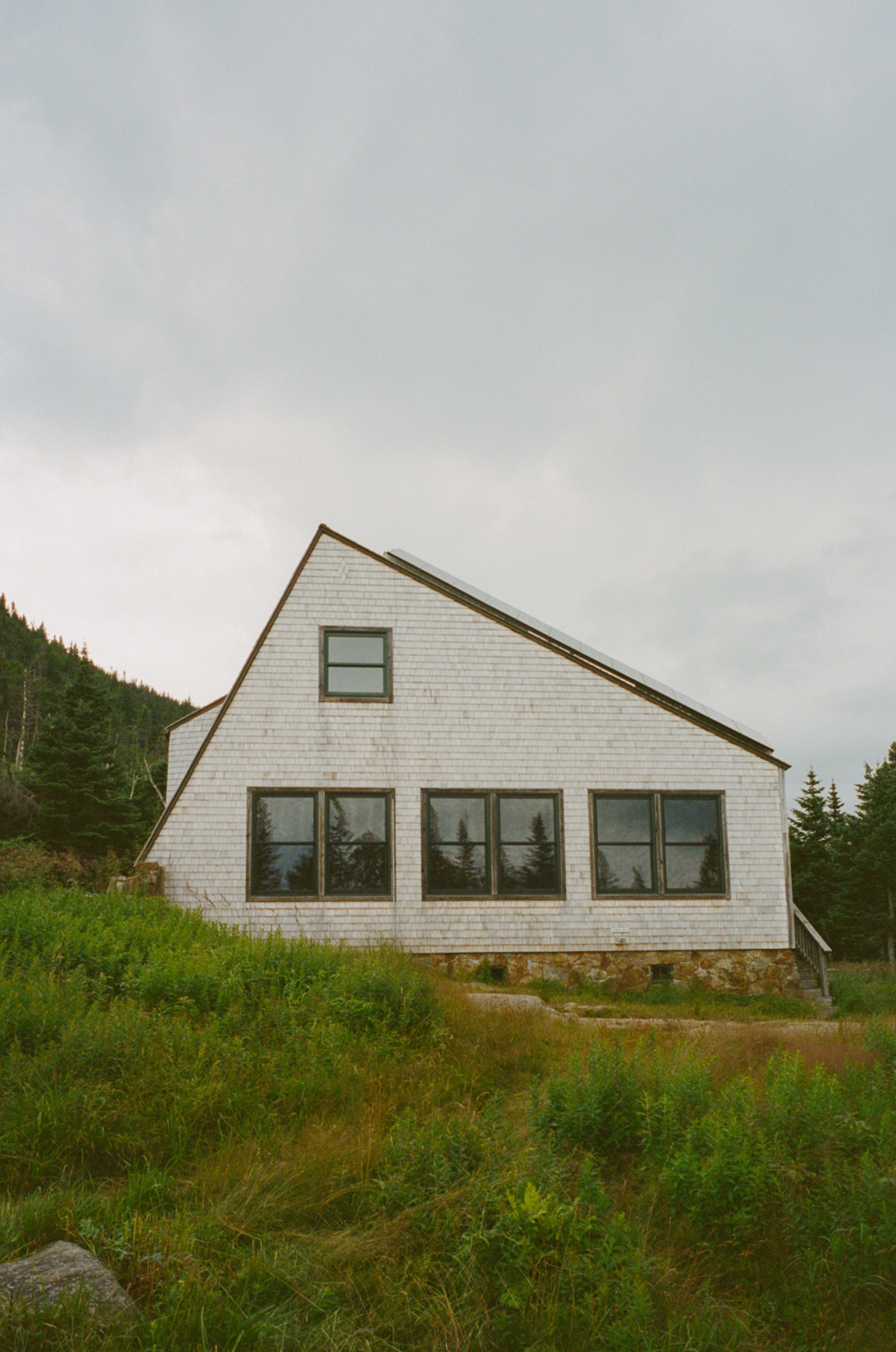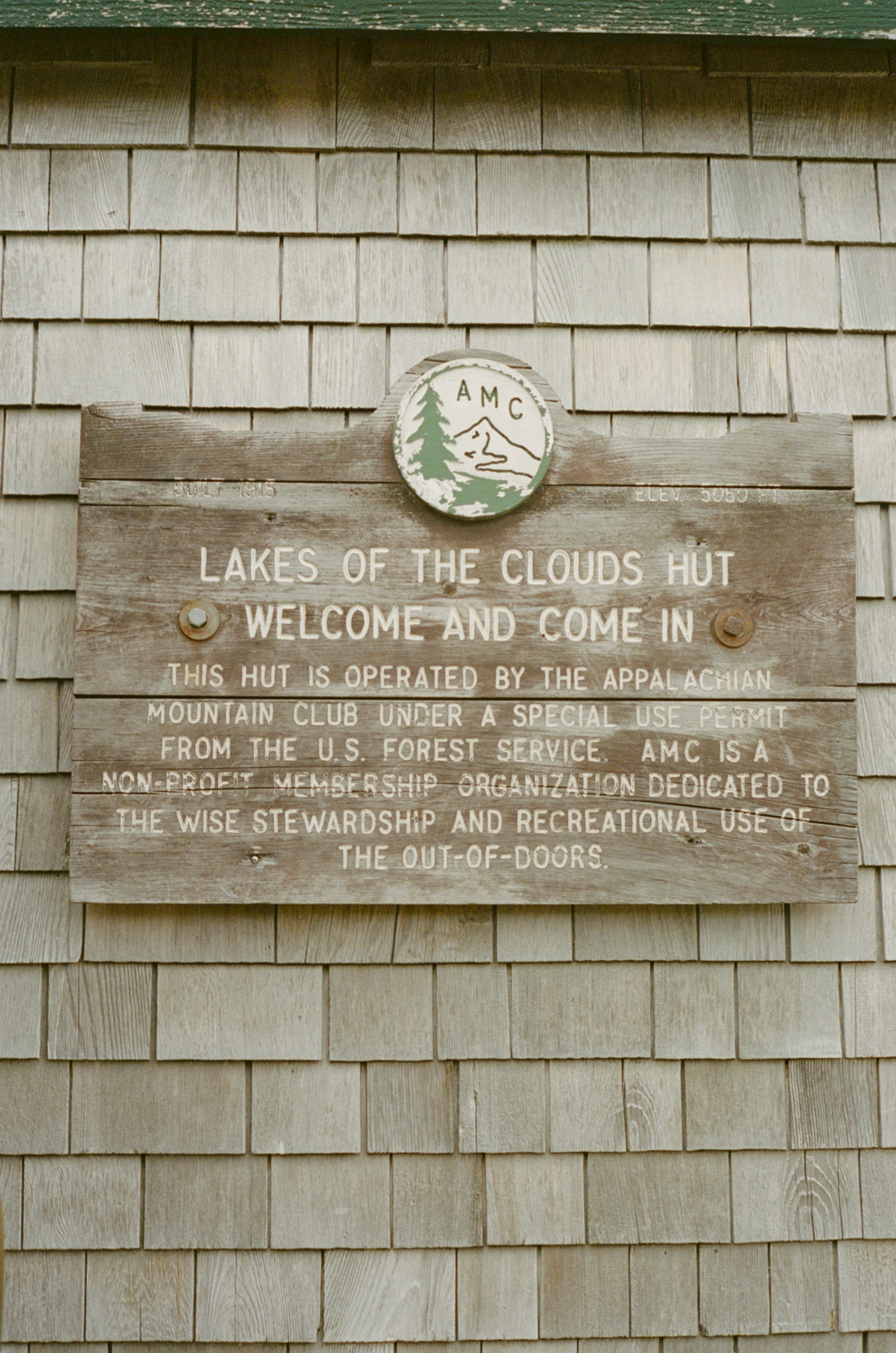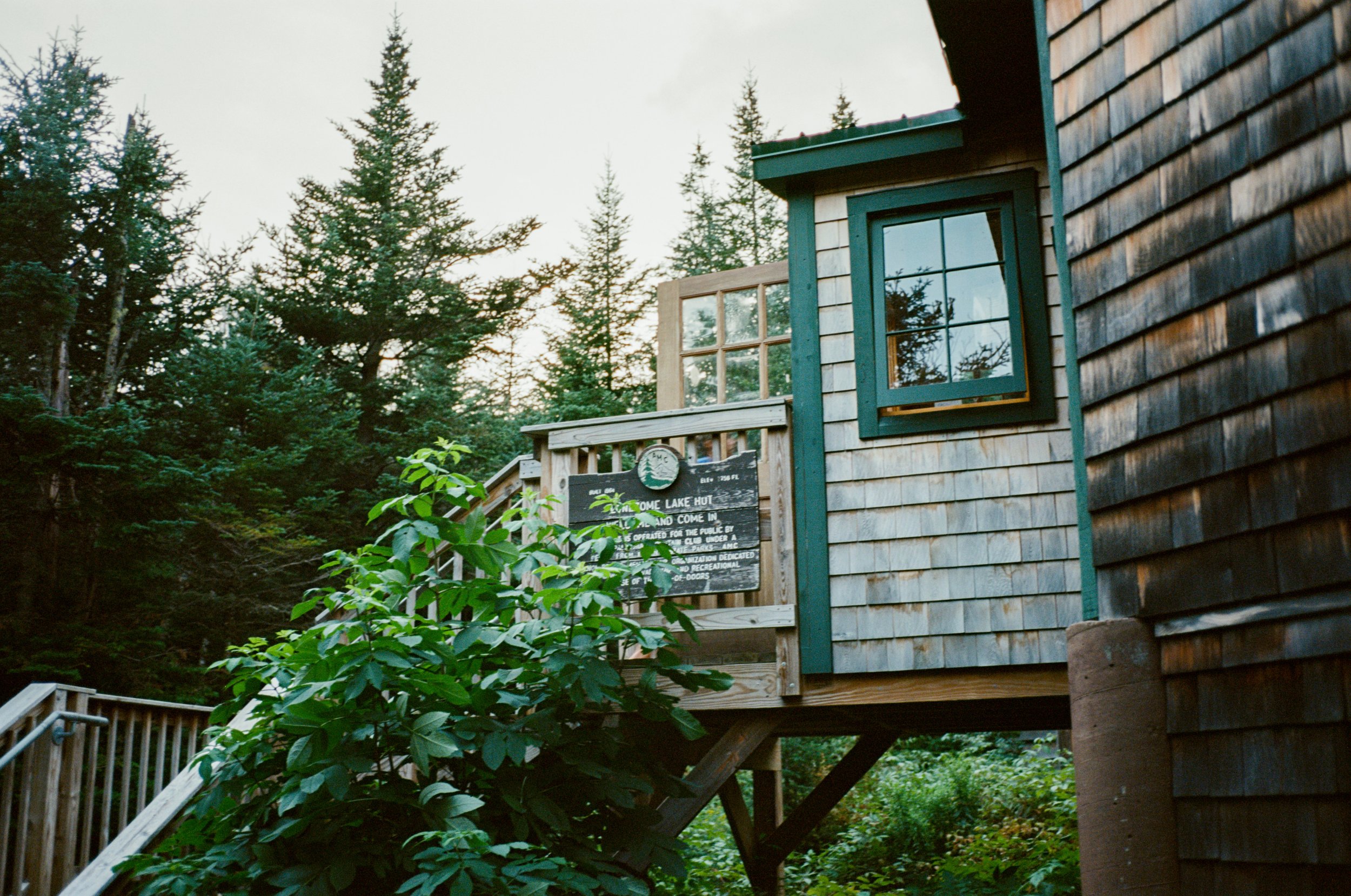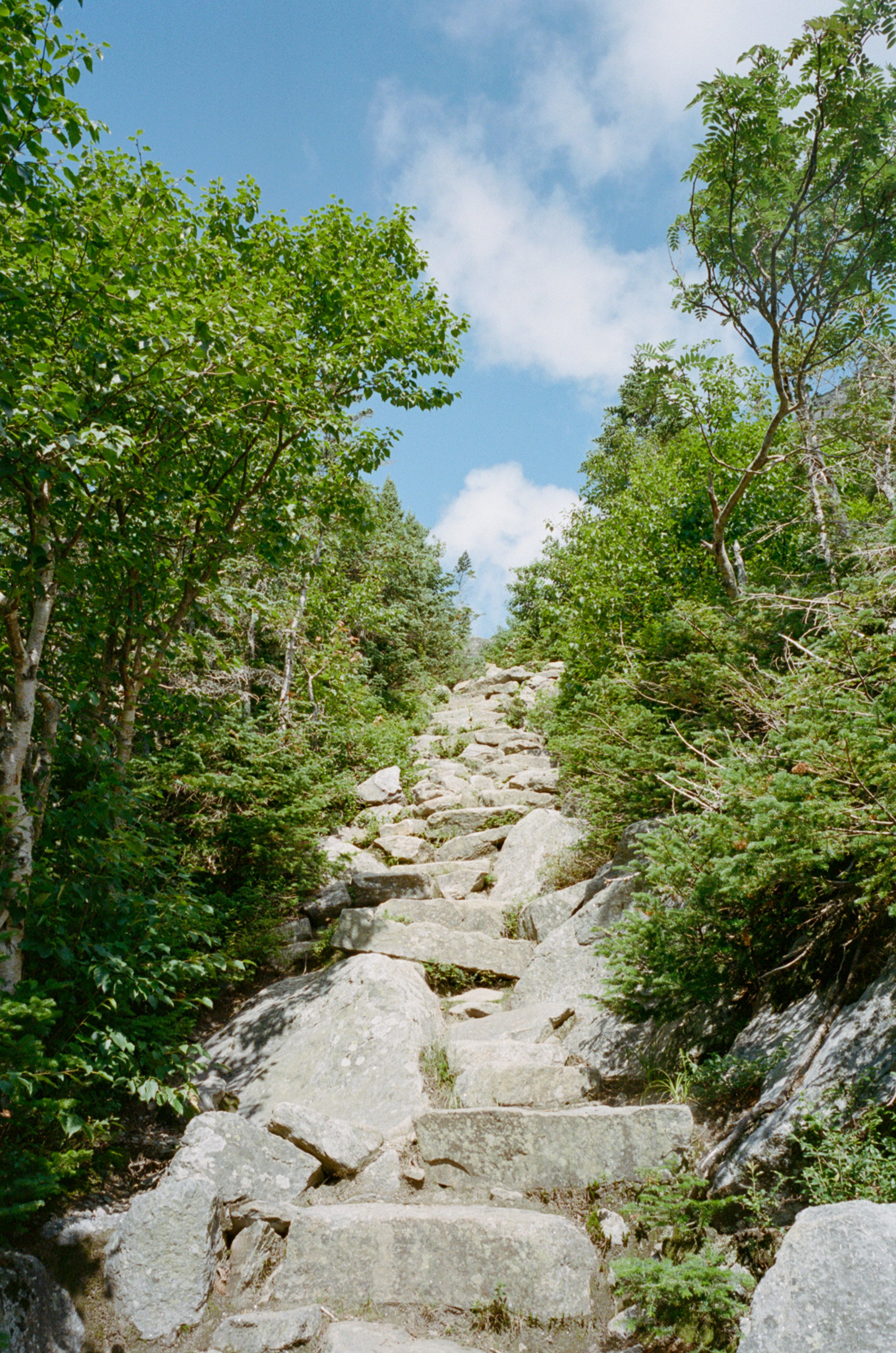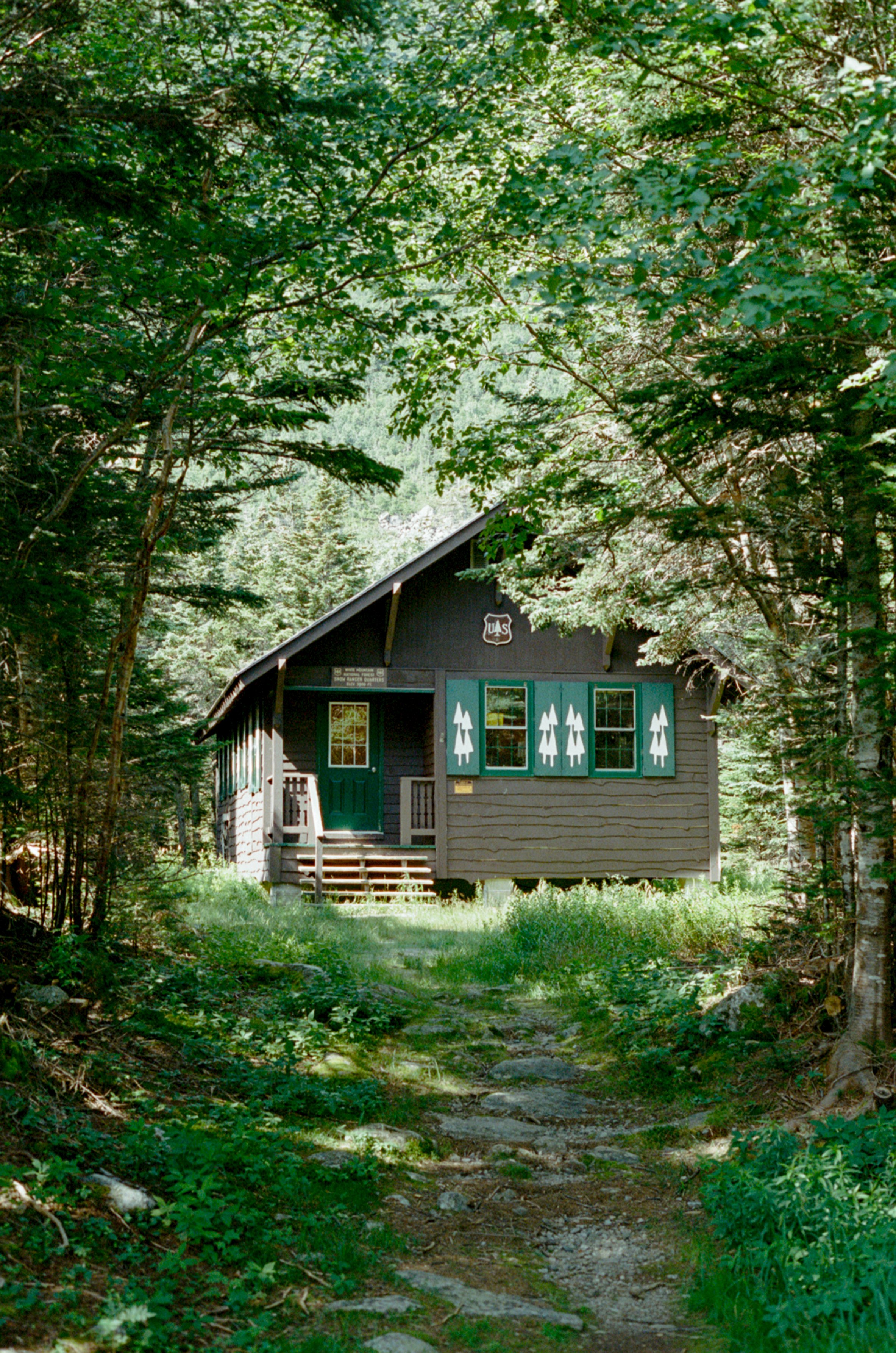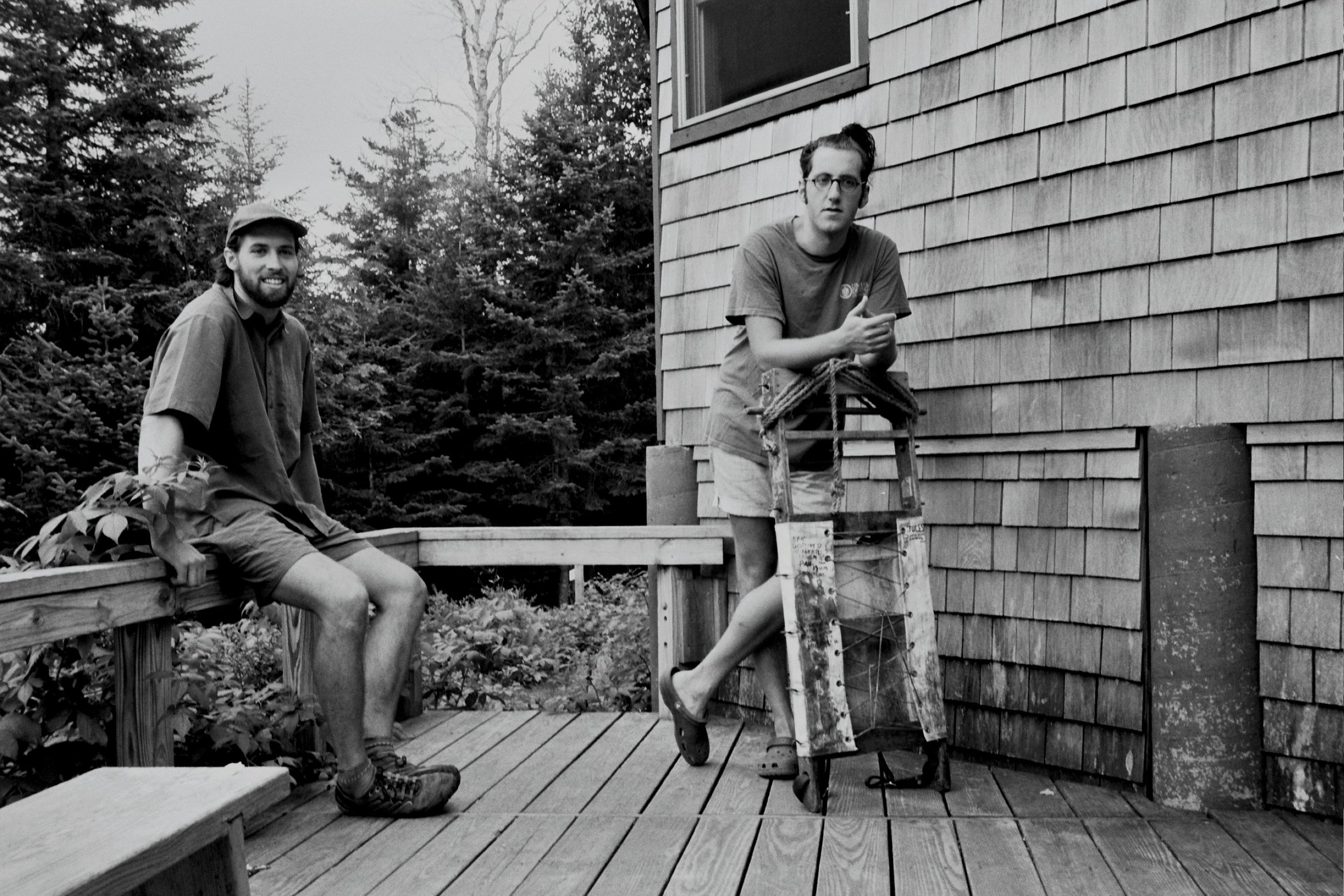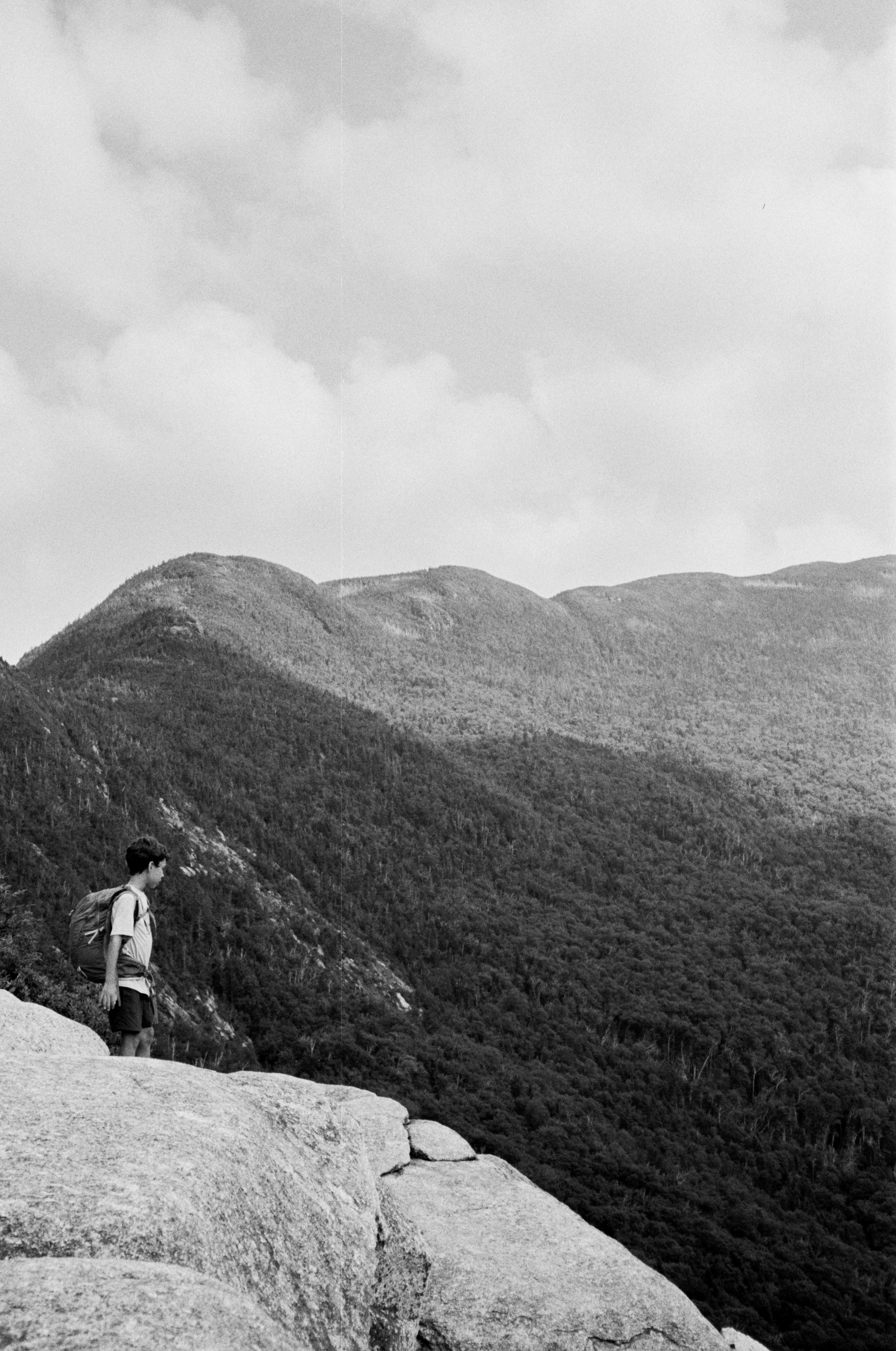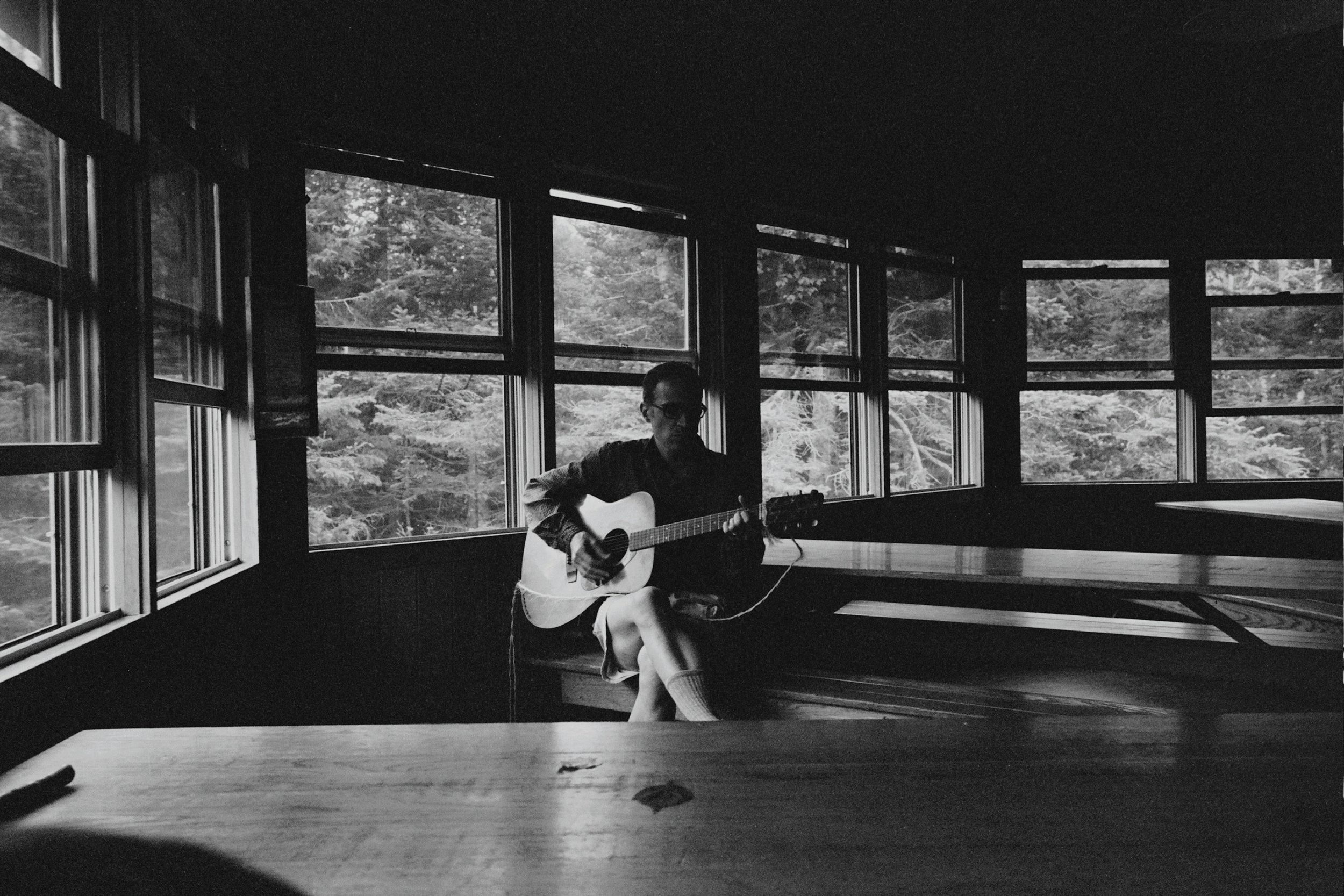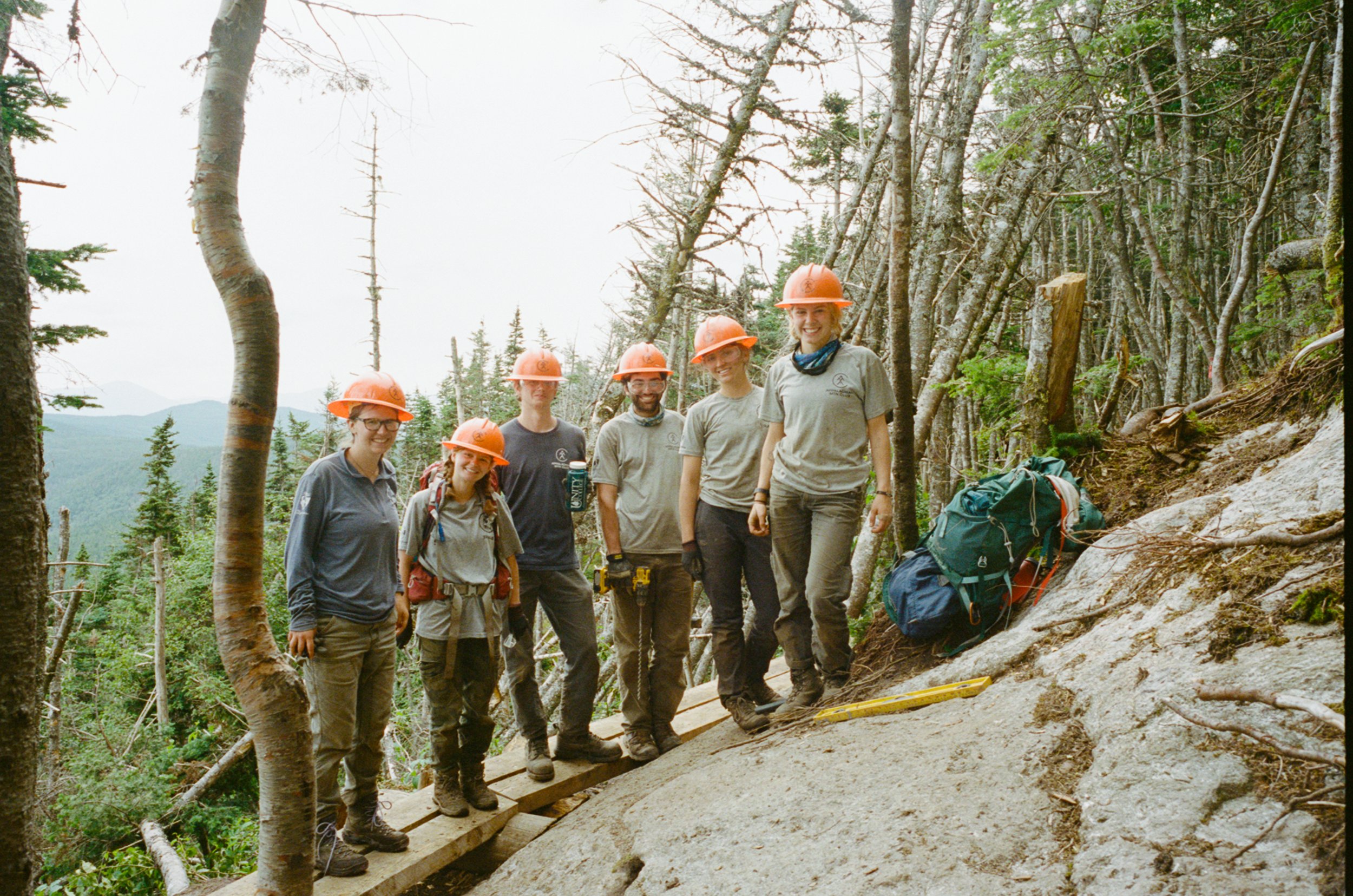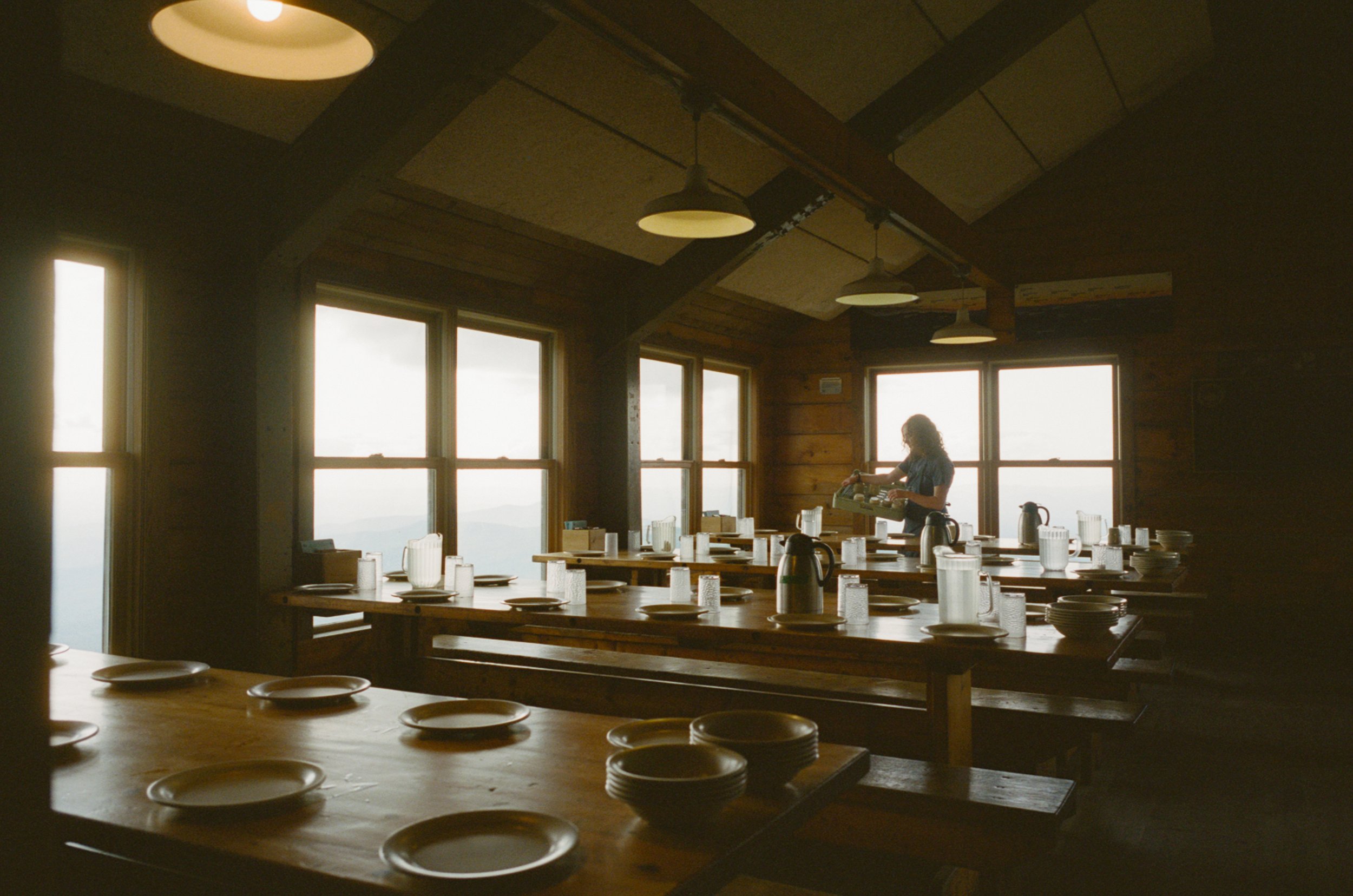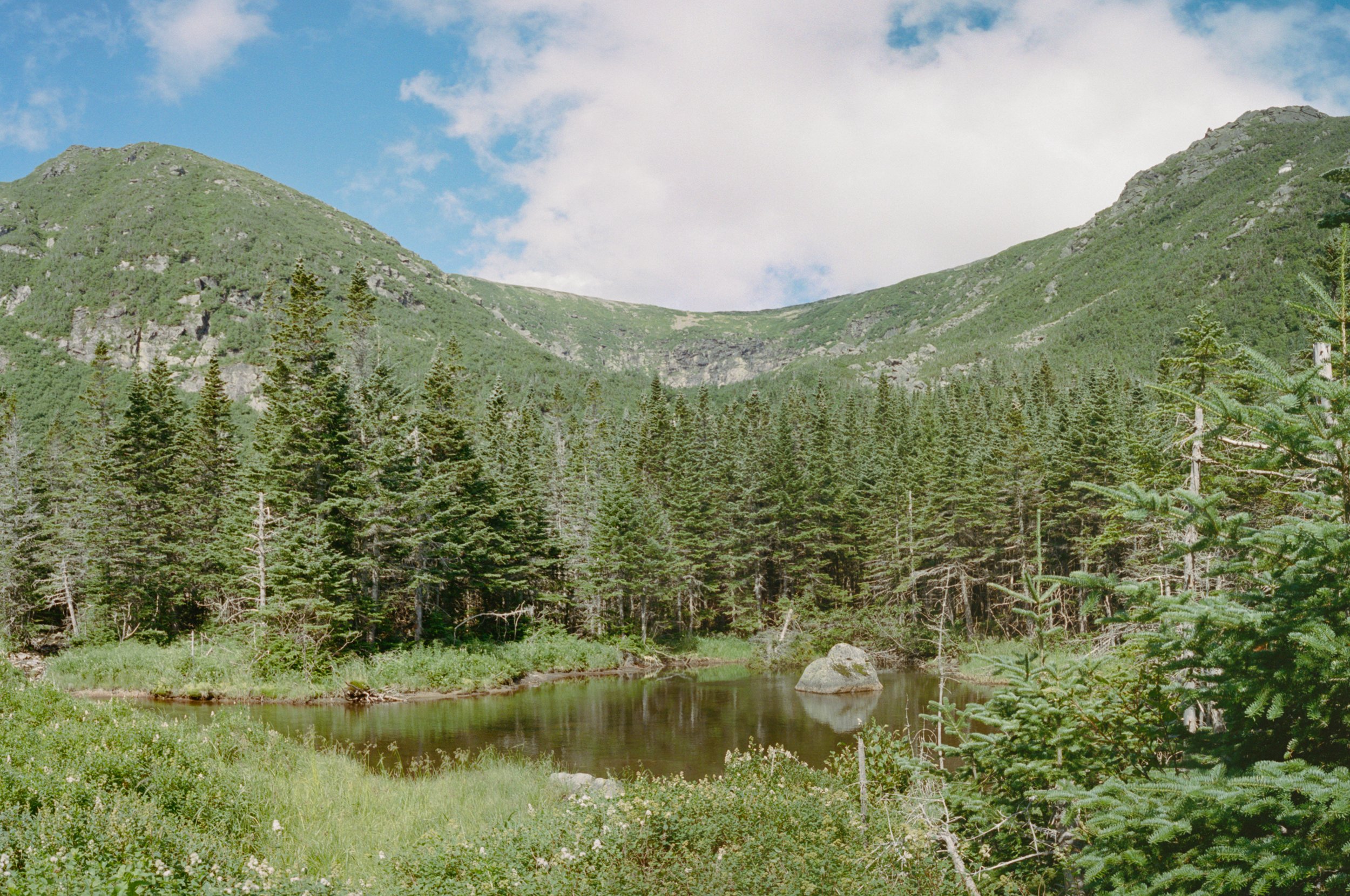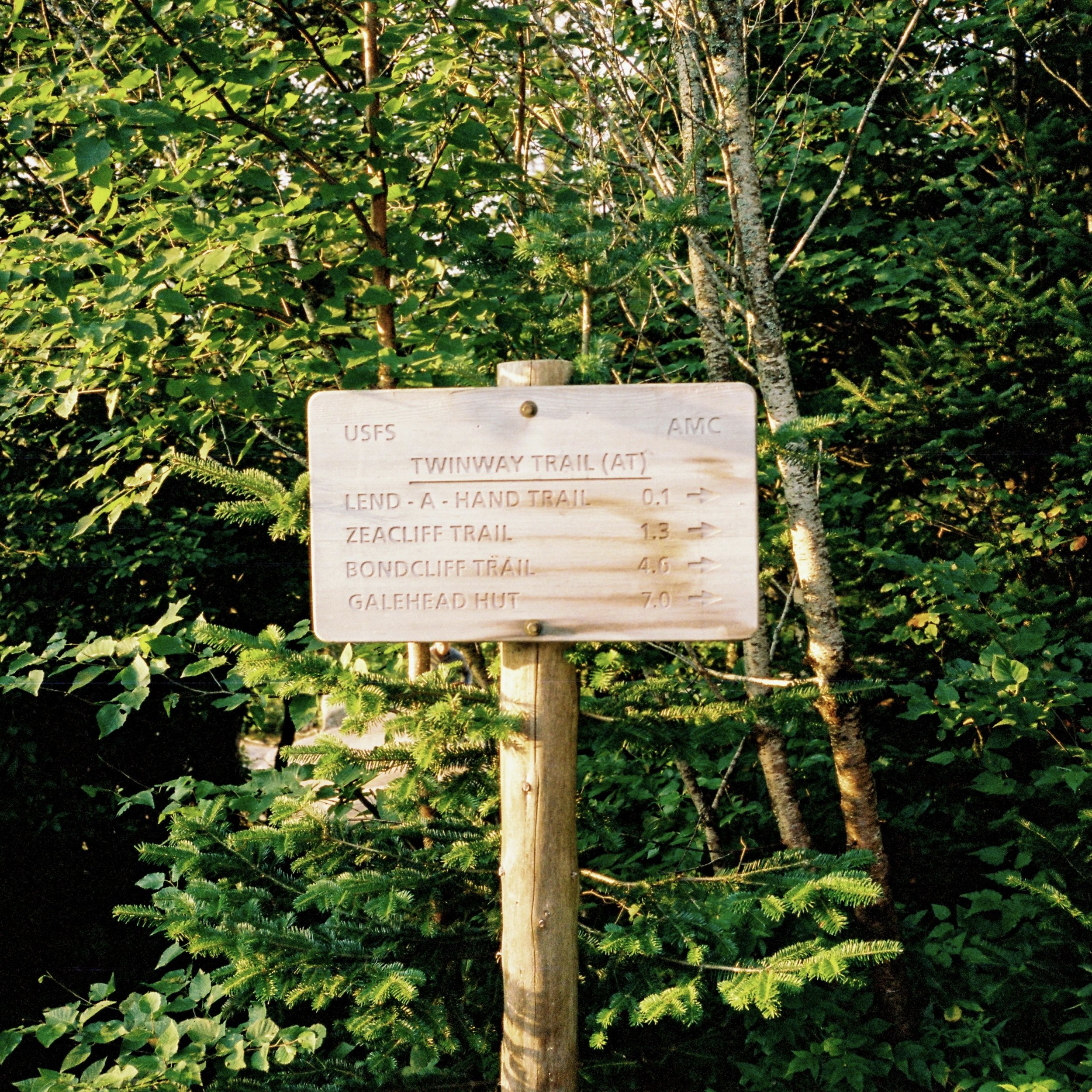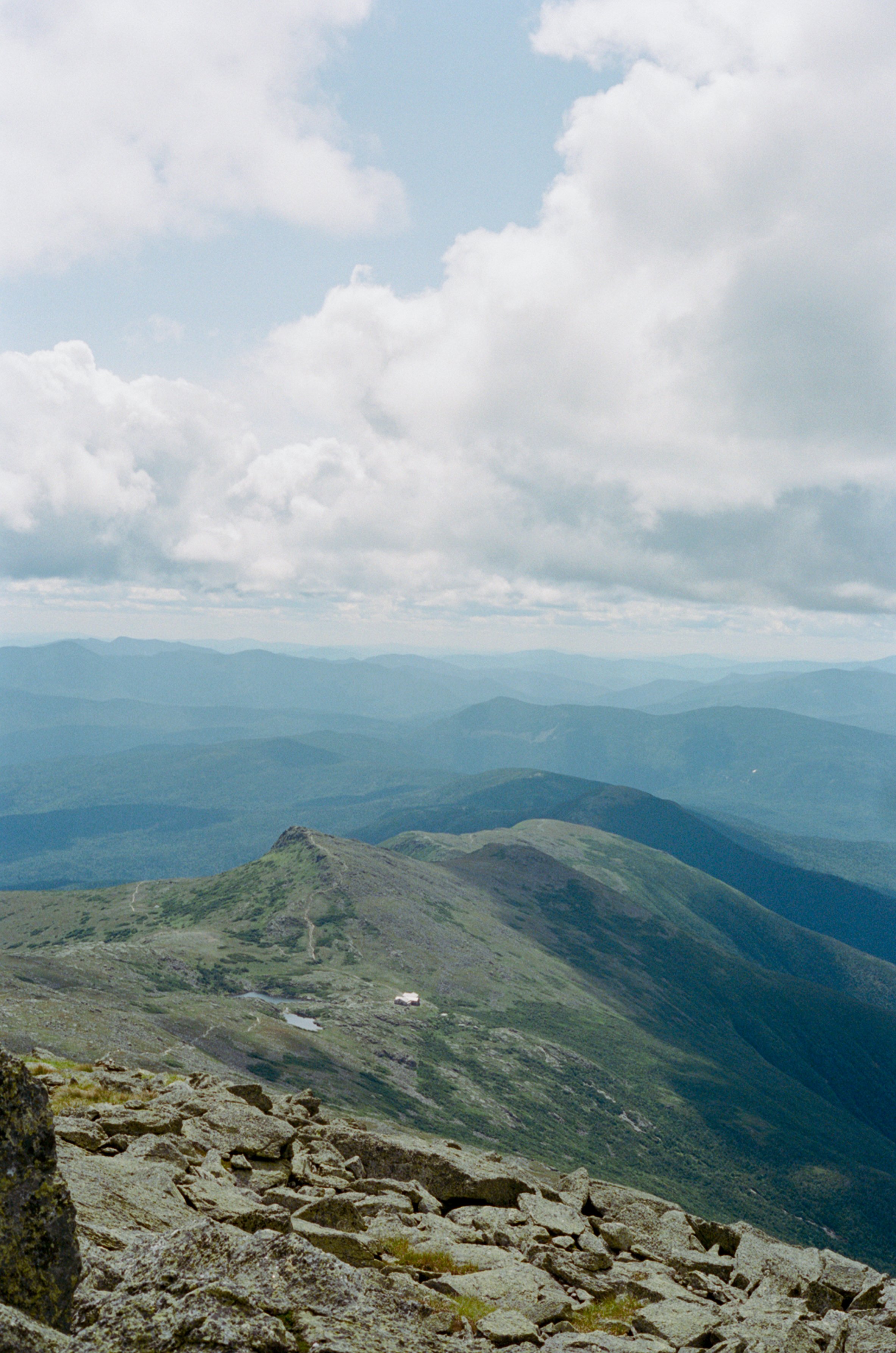A PRESIDENTIAL ADVENTURE ALONG THE APPALACHIAN TRAIL
The Appalachian Trail, heading down to Lakes from the summit of Mt. Washington
The Appalachian Trail spreads out across 2,200 miles of the eastern United States, starting at Springer Mountain in Georgia and winding up at the summit of Mt. Katadhin in Maine. It’s the longest hiking trail in the world and if you were to do the entire run, it would take six months. Don’t worry, this post is not a pitch to dedicate a half a year to living outdoors.
Before the trail was even the trail, The Appalachian Mountain Club (AMC) created a series of eight alpine huts in the late 1800s. They were based off the European Alps’ refuges and are tucked along the Presidential Range of New Hampshire’s White Mountains, about a month and a half from the end of the trail if you’re hiking the Northbound route. The apex is Lakes of the Clouds, an iconic high-altitude lodge just off the top of Mount Washington, one of the tallest peaks along the entire trail.
Each of the huts is a day’s hike from the nearest parking lot (some farther than others) and then a full day’s hike to the following one. You can hike just one or all eight depending on your level of enthusiasm, stamina, and spare time.
Lakes of the Clouds hut at sunset
There are also two “base camp” lodges where you can spend the previous evening to allow for an early start on your first day (Highland Center and Joe Dodge Lodge). A shuttle system runs between the lodges and the parking lots and the best thing to do is to park at the lot where you will FINISH your hike, (make sure to reserve the shuttle when you reserve the huts and pay for your parking spot here) and then take the shuttle bus to the lodge you’ll sleep in the night before. This way, when you finish in a couple days you can land right at your car and head to Polly’s Pancake Parlor for a well-deserved final feast.
Be forewarned: the huts themselves are no luxury glamping experience, but they sure beat having to pitch a tent and lug cooking gear up a five mile incline. Most of them feature communal bunk rooms (bring earplugs in case there are heavy snorers in your room!), no showers, and compost toilets. There’s also no outlets, so if you crave broadcasting images of your hiking feats to the outside world, you’d best bring a portable battery charger (none of the huts have wifi and only a few will give you a couple bars of reception).
But what these spots lack in amenities, they make up for with idyllic charm. The huts are run every year by a rag-tag crew of genial New England college kids who wake you up each morning with a beautiful folk tune before plying you with stacks of pancakes and scrambled eggs to get you bulked up for the day’s hike ahead. In the evening they offer talks on local biodiversity or astronomy after a hearty home-cooked dinner. They also perform hilarious skits around each meal that have kids and adults giggling alike.
Each hut has its own draw beyond this: Lonesome Lake sits right on a stunning pond that kids love to swim in, Greenleaf is tucked on a precarious ridge just below Mt. Jackson, and Zealand’s waterfalls make for a great post-hike cool-down.
Personally, my favorite time of year to visit is the first week of September when the summer crowds have thinned and the heat has dissipated. The huts are open all summer though and a few offer spectacular fall sessions to see the changing of the leaves, while true adventurers can snow-shoe to the lower-altitude ones in the winter.
How you choose your adventure will depend greatly on your hiking skills. We started easy with our six year old son, doing a single night up to Lonesome Lake. It’s less than a two mile walk and not very steep. It was the perfect introduction, easily doable by all, and with each year that went by we tacked on a night or went for a more challenging hut. One of the harder stretches we encountered was Zealand-to-Greenleaf, close to nine miles of grueling multiple peak ascents. One of the most fun was the ridge walk between Lakes of the Clouds and Mizpah.
The best thing to do is to call the AMC and talk to someone directly, the phone center is filled with incredibly knowledgable staff who know the trail inside and out and can advise you on the best route to take depending on your skill, but know that none of the hikes involve any technical training whatsoever.
Do make sure to get the All Trails app and download maps of all your hikes in advance so you’re not dependent on cell service. The trails are exceptionally well-marked, but this way you can know at any given moment how far you are from the next turn or the next hut.
One final caveat is that the higher-altitude huts (3 of the 8) are above tree-line and inclement weather is a real danger. The AMC is really great about updating you throughout your trip to let you know what the latest meteorological situation is and help you (re-)organize your trip safely and accordingly.
Okay, I think that’s it, hope I see you on the trail this summer!!!
Inclement weather nears Mt. Jackson, forcing us to evacuate quickly to Greenleaf hut.
Oh, lastly, here’s a general idea of what you should pack in your 3-day bag:
Gor-tex shell
light down jacket to layer
non-cotton t-shirt to hike in (one for each day)
pair of non-cotton shorts to hike in
comfy top and bottom to wear around the hut at night
hiking boots and thick non-cotton socks
some kind of Tevas/sandals for water crossings and relaxing at the huts
sun hat and glasses
swimsuit (depending on the huts you choose)
small toiletry kit with biodegradable soap should you bath in a lake/waterfall
a head-lamp
phone charger
waterproof stuff sacks. these are ideal to compartmentalize your gear in your pack. one for knick-knacks, one for each day of clothing, one for snacks…
about 2 liters of water bottles per person (you can fill up bottles at the huts)
plenty of snacks for lunches and stops on the trail
if you’re hiking in the summer, no need for a sleeping bag, you can get away with a sleep sack, which is basically a sheet that zips up, otherwise in cooler months you’ll want a bag


